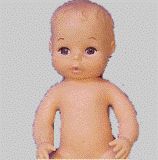Body Surface Area TN
Teacher Notes

This is a great practical investigation with real life applications. It encourages students to think critically about area. Working in small groups students are asked to find an approximation for the surface area of their bodies. Which 3D shapes will best approximate the shapes of the different parts of the body? The formulae required are not included, but students are expected to find them out for them for themselves. To help verify the ‘accuracy’ of their estimate a formula used in the pharmaceutical industry that estimates their body surface area from their mass and height is provided.
How
The following is some practical advice about how the activity might be run.
Resources provided
There is a worksheet for this activity. Students requiring help to structure their approach will benefit from the worksheet which includes a table with a list of the body parts. Other students who might not need this structured help could complete the activity without the worksheet, allowing them to plan and organise the measurements for themselves.
Resources needed
Students will need tape measures - the paper ones that you can pick up from Ikea are ideal! Access to the formula for surface area of spheres, cones, etc. would be useful.
Time needs
This depends on the class, but the planning, measuring and calculating could be completed in about 40 minutes.
Starting and finishing
- I start this activity by getting the students to estimate my body surface area in m². This is an interesting estimation and emphasizes how difficult we find it to visualize how big 1m² is.
- A discussion about why this might be a useful piece of information to know helps to see that area calculations could have important applications outside of the mathematics classroom. An interesting application that one of my students suggested for calculating BSA was for a tanning salon!
- Students should work in small groups. You may want to think carefully about the groupings and how this is done if students are self conscious about their body shapes, although from experience this calculation is less of a problem than say a calculation for BMI might be.
-
In the past I have offered a prize to the group whose calculation best approximates the calculation for

- Also, any group with an error of more than 30% was deemed to have given their patient a fatal dose of a drug!
What to expect
Students really enjoy practical activities in mathematics. In this activity they are required to use their problem solving skills: recognising the shapes and finding and applying the correct formula. How can you calculate the surface area of your head? What dimensions do you need? How can you calculate the radius? The applications in the medical field add a sense of functionality to their work. To know that chemotherapy dosages are sometimes miscalculated because of inaccurate measurements of BSA, and that these dosages could be potentially fatal certainly adds to the importance of making an accurate calculations.

